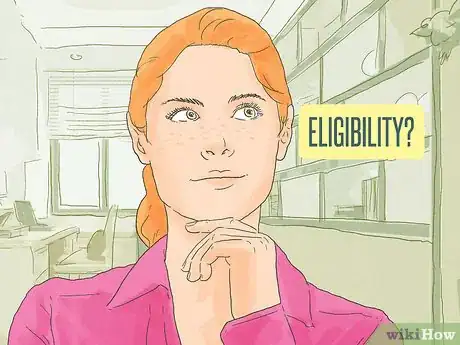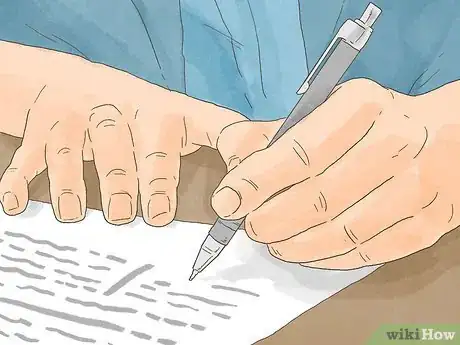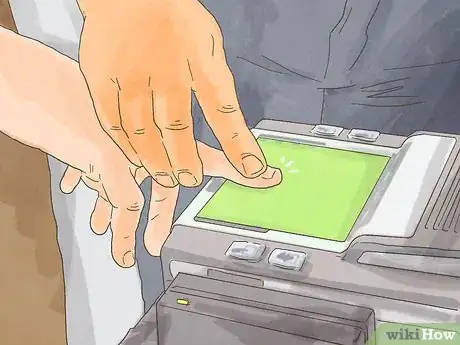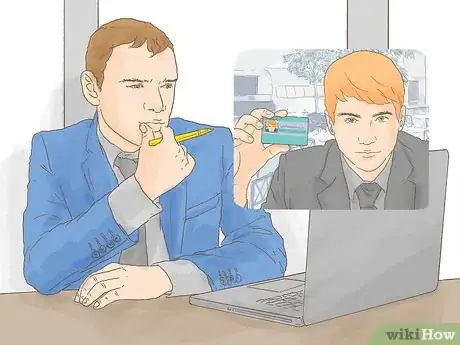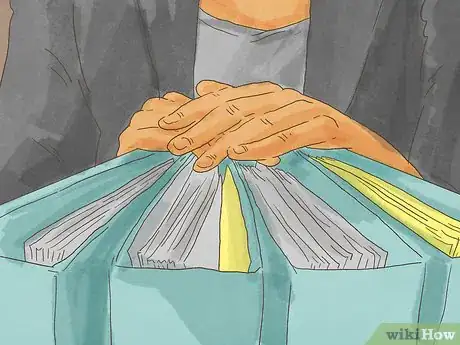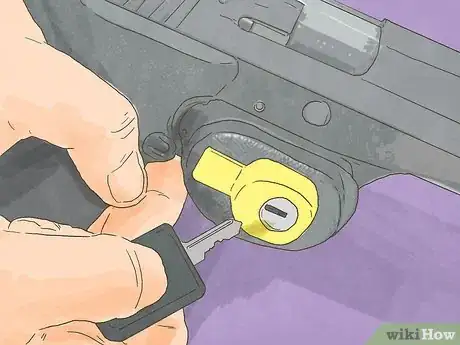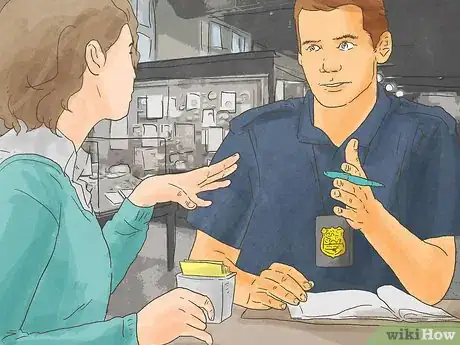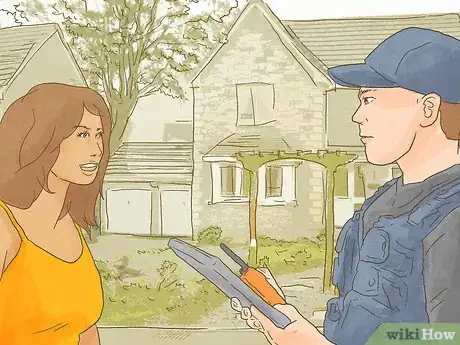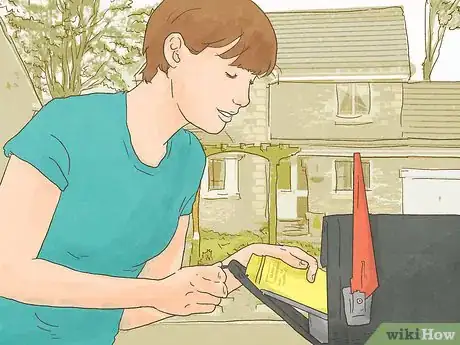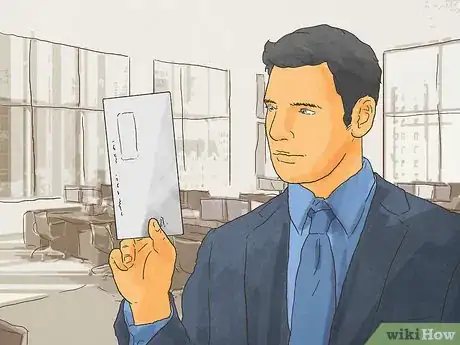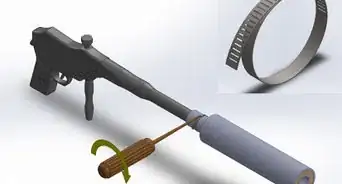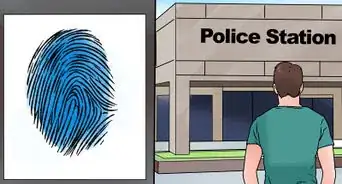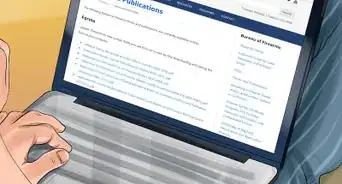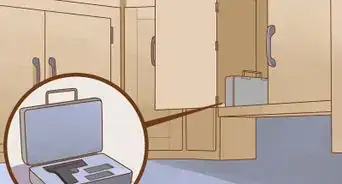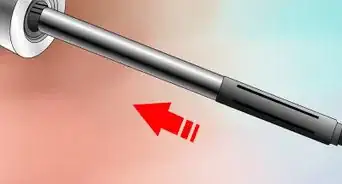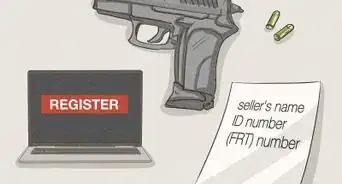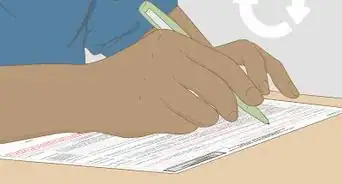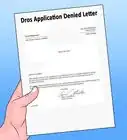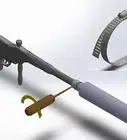This article was written by Jennifer Mueller, JD. Jennifer Mueller is an in-house legal expert at wikiHow. Jennifer reviews, fact-checks, and evaluates wikiHow's legal content to ensure thoroughness and accuracy. She received her JD from Indiana University Maurer School of Law in 2006.
There are 9 references cited in this article, which can be found at the bottom of the page.
This article has been viewed 21,422 times.
As an individual, you are free to sell firearms or ammunition to another individual in the same state without having a license. However, anyone who sells firearms or ammunition to the resident of another state, or who routinely buys and sells firearms as a dealer with the intent to make a profit, must become a federal firearms licensee (FFL). Once you become an FFL by completing the application process through the ATF, you can legally sell firearms and ammunition in the U.S. If you are selling ammunition only, you typically do not need a federal license, although your state may require one.[1] [2]
Steps
Completing Your FFL Application
-
1Verify your eligibility. The ATF will approve your application provided you are a U.S. citizen over 21 years of age, are not prohibited from receiving or possessing firearms or ammunition, and have a place to conduct business.[3] [4]
- Several classes of people are deemed ineligible to be an FFL, including those convicted of crimes punishable by a year or more in prison, anyone dishonorably discharged from any branch of the armed forces, and anyone subject to a restraining order.
- You also cannot become an FFL if you have previously been adjudicated mentally defective or incompetent, or have been committed to a mental institution.
- If there's anything in your record that renders you ineligible, you may be able to remove that disability from your record by applying for relief and obtaining a pardon or expungement, or having a conviction set aside or your rights restored.
-
2Download an application. You can get an FFL application by visiting the ATF website and downloading a copy, or by going to your nearest ATF field office and requesting an application there.[5]
- You also can download a guidance document issued by the ATF that is designed to answer questions about the FFL permit and help you determine whether your business needs one to legally sell firearms and ammunition.
- Keep in mind that in addition to an FFL permit, you also must comply with the laws of the state in which your business is located. Your state may require other permits or background checks, and all of this must be in order before you will be able to operate legally.
- Look over the application and read the instructions carefully before you fill it out.
- Gather information before you begin, including information about your business and any others involved in your business, such as partners or managers, who also must be listed on your application.
Advertisement -
3Fill out your application. The FFL application requires information about your business, the type of sales you plan to make, the location and type of your business premises, its hours of operation, and everyone involved in your business.[6]
- If your business has an EIN, you must enter it on the form. If you're operating as a sole proprietorship under your own Social Security number, you don't have to include your Social Security number on the application, although including it may enable your application to be processed more quickly.
- If you're operating your business as a partnership (not an LLC or corporation), you must list the names of each partner on the top line of the application.
- You may handwrite or type your answers. Print your forms on standard white paper and use black ink for your answers. If you're writing your answers, print with a ball-point pen.
- You must complete and sign four copies of your application. Two of those copies will be for your own records.
-
4Get photographs for each responsible person. The ATF requires you to send a 2 x 2, passport-style photograph for yourself and each person listed on your application as a "responsible person" involved in your business.[7]
- Rather than attempting to take these photos yourself, simply go to a booth where passport photos are made.
- The photos have to meet the ATF's quality specifications, must be in color, and must show the whole face. Generally, if a photo meets passport specifications it will work for an FFL.
-
5Have fingerprints taken for each responsible person. The ATF conducts a fingerprint background check of you and every person listed on your application, so you must submit fingerprint cards.[8]
- Fingerprints must be taken by a government law enforcement official on a standard fingerprint card.
- Each fingerprint card should include the full legal name and signature of the person fingerprinted, along with a physical description of that person including race, height, weight, hair and eye color.
- The fingerprint card also includes basic identification information about the person fingerprinted such as date of birth, Social Security number, and place of residence.
- When you submit these cards, the ATF will inspect them for clarity. If your fingerprints don't come out well or the ink is smudged, get them taken again.
-
6Submit your application packet. Once you've completed your application and gathered the required photographs and fingerprint cards for every person listed on your application, you must submit the first copy to the ATF post office box listed on the application form.[9] [10]
- The copy you submit to the ATF must be accompanied by the appropriate application fee listed on the application – $200 if you're applying for a license to sell firearms in a retail, pawn shop, or other similar location.
- Cash is not accepted, but you can pay your fees using a debit card, credit card, check, or money order. Your check or money order should be made payable to "ATF."
- The application labeled "Copy 3" should be sent to the chief law enforcement officer of the precinct where your business is located.
- The applications labeled "Copy 2" and "Copy 4" are for your own records. Keep them in a safe place with your other business records.
- FFL applications are not transferable, so if you change the organization structure of your business, you must complete a new application for the new business. For example, if you begin your business as a sole proprietorship and later incorporate, you must get a new FFL license for the corporation.
-
7Complete your interview. Once the ATF receives your application, your information will be entered into the database and electronic background checks will be conducted on each individual listed on the applications.[11]
- When background checks are completed, the entire application package will be forwarded to the ATF field office in your area.
- The field office supervisor assigns your application to an Industry Operations Investigator (IOI), who will interview you in person.
- Expect the IOI to ask you questions about your business and discuss federal and state laws and regulations applicable to the sale of firearms and ammunition.
- The IOI also will review the information you entered on your application to ensure it is current and accurate.
- After your interview, the IOI will write up a report and recommend whether your license should be issued or denied.
- Assuming the IOI recommends your license be issued, you can expect to receive your license within 60 days after all background checks and other application processing is complete. Your initial license is valid for three years.
Maintaining Your License
-
1Run background checks on all unlicensed purchasers. Before you complete the sell of a firearm or ammunition, you must call in a check to the National Instant Criminal Background Check System (NICS) to ensure the potential purchaser is eligible to buy or possess a firearm.[12] [13]
- You can conduct a background check over the internet or by calling the NICS toll-free phone number.
- The system is available 17 hours a day, seven days a week, except on Christmas Day.
- If the background check does not come back with a "proceed" response, that person is not allowed to purchase a firearm and you cannot legally sell to them.
-
2Keep detailed transaction records. When you buy or sell a firearm or ammunition, specific ATF forms and records must be completed in full and kept on file at your place of business.[14]
- ATF Form 4473, "Firearms Transaction Record," must be completed for each and every sale or transfer of a firearm conducted through your business.
- These forms must be completed for each firearm, even if the same person purchases several guns.
- The ATF has a best practices document that you can download from the bureau's website. This document provides a quick reference to the federal laws and regulations with which you must comply as an FFL.
- If you conduct an inventory and find a firearm lost or stolen, you must file a "lost or stolen firearm" report within 24 hours of discovery.
-
3Provide safety locks with every handgun. Federal law requires you to include a secure gun storage or safety device with each handgun you sell, and make gun locks and other safe storage devices available in your store.[15] [16]
- There are no federal standards regarding the safety or effectiveness of locks and safes. However, there are voluntary industry standards in effect.
- Several states such as California and Massachusetts have laws concerning gun locks and safes and regulations implementing safety standards for locking devices.
-
4Respond to tracing requests promptly. Transaction records allow law enforcement to trace a gun back to its original owner if the gun is confiscated or used in connection with criminal activity.[17]
- If a firearm's serial number is traced back to your business, the law enforcement agency will submit a transaction report records request to you.
- When you receive the request, you have 24 hours to respond and provide the appropriate documentation to law enforcement.
-
5Cooperate with inspections. While you have an active FFL, the ATF may inspect your premises without a warrant at any time during regular business hours as listed on your application to evaluate your inventory and check your transaction records.[18]
- The ATF attempts to inspect every FFL at least once every six years, and every FFL located near the U.S./Mexico boarder at least once every three years.
- An ATF investigator will review your records and ensure you have all the proper forms and records available on site.
- The investigator also will observe sales to ensure proper procedures are followed during the transaction.
- ATF investigators also may review your inventory records to ensure they match up with your transaction records and forms and all the firearms that have gone through your business have been properly accounted for.
Renewing Your License
-
1Receive your renewal application. The ATF will mail a renewal application form and instructions to the address on your original license about 60 days before your original license is set to expire.[19]
- You are responsible for getting a renewal application and submitting it in a timely manner so your license doesn't lapse.
- If you haven't received a renewal package from the ATF, get one at the local field office or visit the bureau's website to download one.
-
2Complete your renewal application. The renewal application requires essentially the same information as your original application. It must be filled out completely, even if the information hasn't changed from what you initially submitted.[20]
- The renewal application requires much of the same information you already provided on your original application, but you should make sure what you enter on the renewal is current and up to date.
- You can add people to a renewal application. However, since licenses are not transferable you cannot use a renewal application to change the name or business entity of the primary applicant.
- In other words, if you applied for your license as a sole proprietor and have since added a partner, you can add that person's name to the renewal. However, if you reorganized your business as a corporation, you must file a new (rather than a renewal) application in the name of the corporation.
- You don't have to complete a new or renewal application if you are moving your business to a new address in the same state. You must file the ATF Form to amend your FFL and submit your original license. You aren't allowed to operate in the new address until you receive your amended license.
-
3Submit your renewal application. When you've completed your license and all required documentation, you must send it to the ATF post office box listed on the application form along with the required fee.[21]
- If you submit your renewal application at least 90 days before the expiration date on your original license, you should receive your renewal license before the original expires.
- The ATF charges a $90 fee for a three-year license renewal. Payment may be made by check, money order, credit or debit card. Checks or money orders should be made payable to "ATF."
-
4Request a Letter of Authorization. If you sent your renewal application before the date your license was set to expire, but have not yet received your renewal license, you can request a Letter of Authorization – also called a Letter of Continuing Authority to Operate or LOA – from the ATF.[22]
- The LOA will allow you to continue to legally operate your business while your renewal is pending, including purchasing firearms and ammunition from other FFLs.
- An LOA is only good for six months. If the six months lapses and you still haven't received a renewal license, you can request an extension of your LOA.
- To be eligible to receive an LOA, your renewal application must be postmarked before the expiration date of your original license.
-
5Receive your new license. Once the ATF has processed your renewal application, you will get your new license in the mail unless there are items on your application for which the ATF needs additional information.[23]
- Someone from the ATF field office nearest you will contact you if there's a problem with your application or they need further information.
- Keep in mind that submitting an incomplete application can result in a substantial delay of your new license, and may render you ineligible for an LOA.
- Generally you can expect to get your license within 90 days of the date you submitted your renewal application, provided the information you provided is complete and accurate and you've included the correct fees.
Warnings
- If you willfully deal in firearms as a business without a federal license, you can be sentenced to up to five years in prison and required to pay up to $250,000 in fines.[24]⧼thumbs_response⧽
References
- ↑ https://www.atf.gov/file/100871/download
- ↑ https://www.atf.gov/resource-center/docs/0501-firearms-top-10-qaspdf/download
- ↑ https://www.atf.gov/file/100871/download
- ↑ https://www.nraila.org/articles/20040324/citizen-s-guide-to-federal-firearms-law
- ↑ https://www.atf.gov/file/100871/download
- ↑ https://www.atf.gov/firearms/instructions-form-7-application-federal-firearms-license
- ↑ https://www.atf.gov/firearms/instructions-form-7-application-federal-firearms-license
- ↑ https://www.atf.gov/firearms/instructions-form-7-application-federal-firearms-license
- ↑ https://www.atf.gov/file/100871/download
- ↑ https://www.atf.gov/firearms/instructions-form-7-application-federal-firearms-license
- ↑ https://www.atf.gov/firearms/apply-license
- ↑ https://www.fbi.gov/about-us/cjis/nics
- ↑ https://www.atf.gov/resource-center/docs/0501-firearms-top-10-qaspdf/download
- ↑ https://www.atf.gov/file/100871/download
- ↑ https://www.atf.gov/file/100871/download
- ↑ http://smartgunlaws.org/safe-storage-gun-locks-policy-summary/
- ↑ https://www.atf.gov/file/100871/download
- ↑ https://www.atf.gov/resource-center/docs/factsheet-ffl-complaincepdf-0/download
- ↑ https://www.atf.gov/firearms/current-licensees
- ↑ https://www.atf.gov/firearms/current-licensees
- ↑ https://www.atf.gov/firearms/current-licensees
- ↑ https://www.atf.gov/firearms/current-licensees
- ↑ https://www.atf.gov/firearms/current-licensees
- ↑ https://www.atf.gov/file/100871/download
